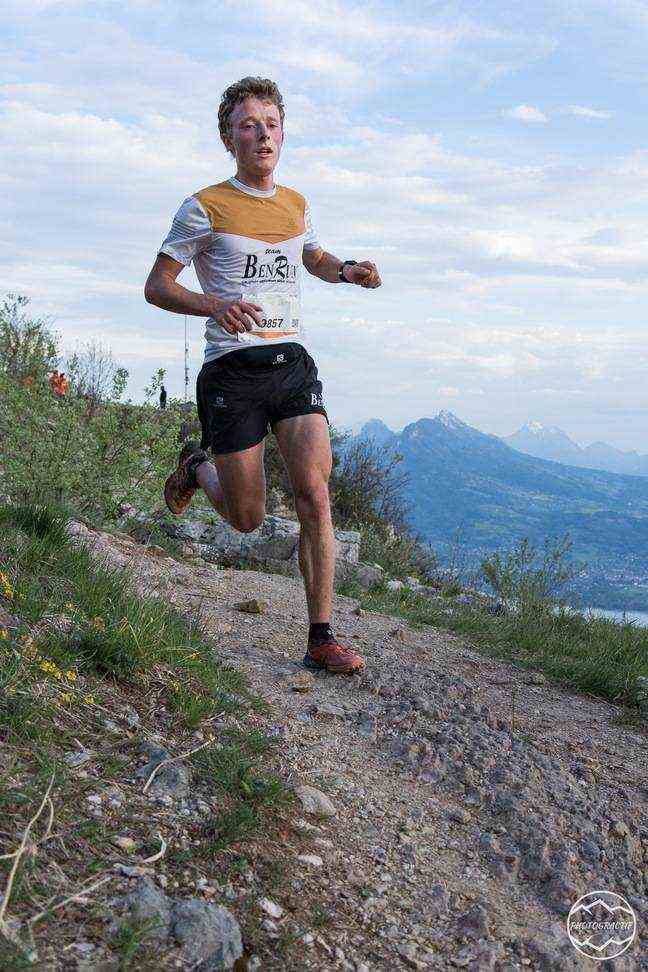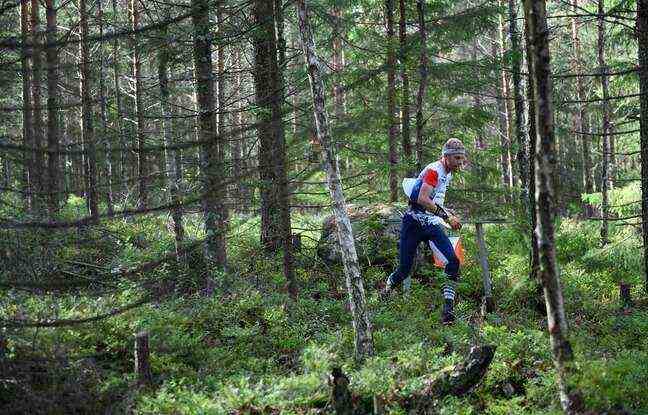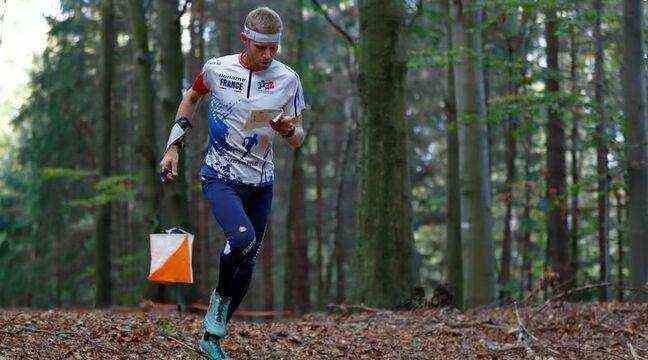“This is neither a treasure hunt, nor a trail. »Communication and development officer for the French Federation of
orienteering race, Robin Devrieux thus describes the second most practiced outdoor sport in France at school level behind climbing, with around 200,000 young people affected from the age of 8. Because yes, for most of us, orienteering comes down to rare sessions in the forest closest to our college-high school, divided between cheating attempts and the wish to one day see applications with GPS launched. .
This day has come a long time ago, but the purists of this discipline, which appeared as a military exercise in the 19th century in Scandinavia, do not care. “We have immense freedom, in the middle of nature, to build our itinerary,” says Frédéric Tranchand (33), one of the rare French professional guidance counselors. We go alone, we discover a map at the last moment, and with the help of a compass, we must find, as quickly as possible, all the markers in order. “
Cards “important for the neurological development of young people”
Falling into orienteering at the age of 10, in the heart of the Pilat (Loire) regional natural park, “big historical basin of orienteering”, this one will try to obtain in the Czech Republic this Thursday (relay) and Friday (long distance) the eighth world medal of his career, even his first in gold. The Ligérien emphasizes above all “the qualities of endurance” necessary to impose himself at the high level in a sport perceived above all as a leisure activity in France.
“Family fun is an axis that we are developing, in particular through permanent courses linked to heritage, as in Bayeux on the theme of the Liberation,” explains Robin Devrieux. It is our strength to be open to all audiences who love nature or urban challenges, including through digital tools. It is proven that working with a map is important for the neurological development of young people. So we don’t have to choose between leisure and sport. “
A first CO pole in Saint-Etienne in 1995
A feeling shared by the French legend of orienteering, Thierry gueorgiou (42 years old): “Some elite orienteers are frustrated by this image of leisure, but personally, I find it great that it is one of the rare sports that you can practice with your whole family. The best moments of my life remain these trips with my parents to discover Scandinavia or Switzerland via the OC ”. The French Federation, which was created in 1970, owes a lot to his family, also from Saint-Etienne. In the 1990s, the Gueorgiou revitalized a discipline that lacked quality maps (with more detailed topography than IGN maps).
“My parents were PE teachers and they left 200% on OC, says Thierry. My father taught me everything about this sport from when I was 4 years old. By becoming president of the Nature Orientation Saint-Etienne club and then national trainer in 1994, he wanted to copy what the Scandinavians were doing. A year later, a France pole was created, in Saint-Etienne of course, and Thierry (then 16 years old) was part of the first promotion of six guidance counselors.

Ten times more licensees in Sweden than in France
Twenty-six years later, he became coach of the Swedish national team, but above all the most successful guide in history for men, with 14 world titles. The Stéphanois was able to be seconded full time by the gendarmerie for five seasons before becoming one of the few professionals in the discipline until 2017, the year of his final world title, at 38 in Estonia. The one who has shared the life of a Swedish woman since 2012, near Stockholm, has always been imbued with this Scandinavian passion for OC.
Here, people like to be close to nature. Everyone walks with cards in the forest, the world championships are broadcast on a national channel, and Sweden has 100,000 licensees for 10 million inhabitants. CO has almost the same place here as table tennis in China. “
For its part, France is struggling to reach the bar of 10,000 licensees, with its 230 clubs in total. “Thanks to Thierry Gueorgiou, who is our Martin Fourcade, we are no longer taken for tourists on the international scene”, smiles Frédéric tranchand. Its success prompted the youngest to compete, like yet another Stéphanois, Fleury Roux (23).
“1 hour of CO is equivalent to 2h30 of trail running as you have to be focused”
“The strategic dimension of this sport attracted me a lot,” confides the five-time French champion in the youth categories. It’s racing, but in a really fun way. However, for me, 1 hour of CO is equivalent to 2h30 of trail running as you have to be focused all the time. With this very important mental load, the body is quickly damaged. This is why our longest format stops at 1h40 of racing. “

Fleury Roux, who won both the Oisans Trail Tour (22 km) and the French vertical kilometer championship, embodies the versatility of orienteers, very successful in other disciplines. outdoor. “Be careful, the top 15 in the world are all professionals and are crazy athletes,” insists Thierry Gueorgiou, who had devoted himself entirely to OC during his career. “Crazy athletes” that the trail world follows closely, such as Jean-Michel Faure-Vincent, manager of Team Salomon.
Frédéric Tranchand manages to titillate Kilian Jornet
“I remember a trail in Ventoux (46 km) in which Swiss orienteer Marc Lauenstein was wrestling with four other runners at the top,” he says. Downstairs, there was only him. The orienteers are machines in descent because they are used in CO not to see where they put their feet. So as soon as there is a semblance of a trail path, it’s royal for them. “
References respectively in skyrunning and ski mountaineering, the Swiss Judith Wyder and the Swedish Tove Alexandersson illustrate these extraordinary abilities acquired with the high level in orienteering. Frédéric Tranchand also took advantage of the cessation of CO competitions due to Covid-19 to mark the spirits in trail running in August 2020. He thus placed second, in 2h33, in the legendary Sierre-Zinal event, in the Swiss Alps (31 km and 2,000 m of elevation gain), only 30 seconds behind a certain Kilian Jornet.

“We never wonder if our ankle will hold”
“We are used to having the best reflexes when putting downforce, even on the most technical terrain,” continues the Fleury Roux suit. We never ask ourselves whether our ankle will hold. If the best path we have targeted involves going through the brambles, we do it. The OC, which will have its French championships in medium distance and in relay from July 29 to August 1 in La Plagne (Savoie), also offers night competitions, even more tightrope walkers.
Because in addition to the risk of falls, these solitary moments in the middle of nature sometimes give rise to surprising encounters, even at risk. Fleury Roux thus found himself face to face “with a herd of elk” during training in Sweden. Launched at the head in two consecutive world championships in relay, Thierry Gueorgiou has lived through sacred misadventures in the quest for the first gold medal in history for the French team.

An abandonment in the middle of the World … after having swallowed a bee!
“In 2008 in the Czech Republic, I stepped on a swarm of bees and swallowed one,” he recalls. I had an allergic reaction and passed out. I had to be taken to the nearest hospital by helicopter. Before being crowned at La Féclaz (Savoie) in 2011, the Blues again let the title slip away in 2009, but this time without regret.
“We were four teams [Norvège, République tchèque, Suède et France] in the lead, and suddenly, we witnessed something dramatic. Swede Martin Johansson fell and was left with a branch stuck in his thigh. Anyone in our place would have stopped to take care of him and alert the emergency services. The race having been held, the three favorites stopped an hour and had to draw a line on their goal of medal. With a consolation prize: they have despite themselves become role models by winning the international fair play award for this action. An award so CO.

